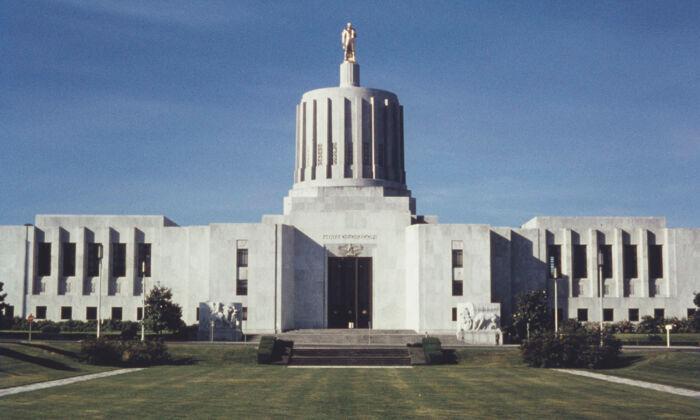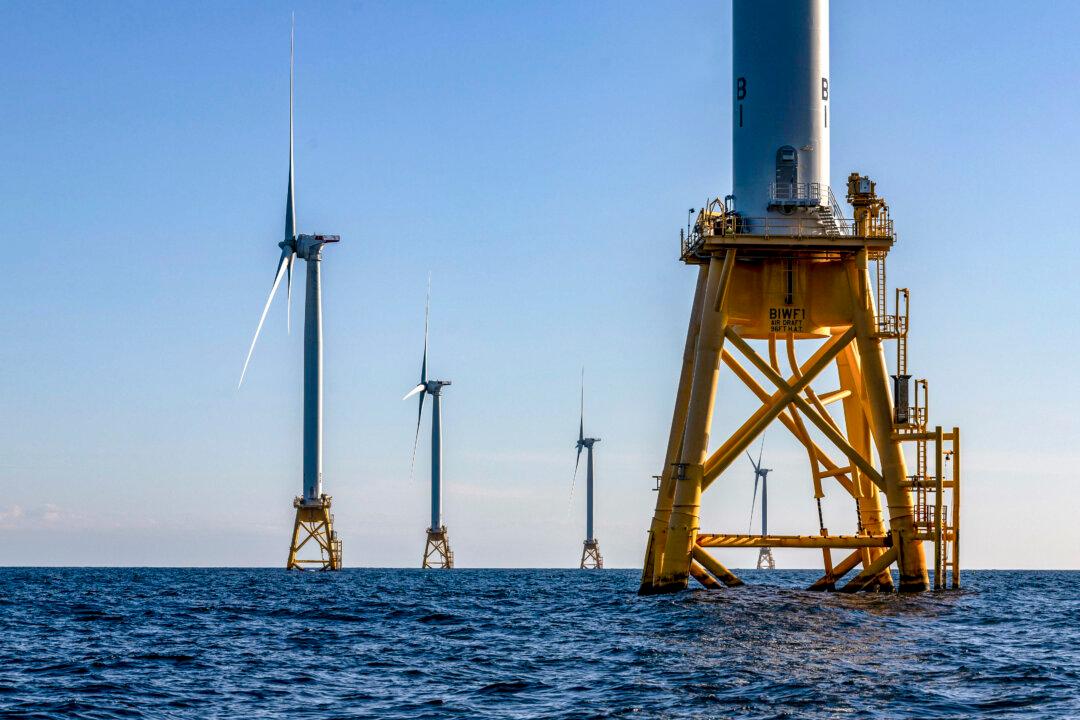An ice and snow storm arrived across the Pacific Northwest on Tuesday, days after snow, freezing rain, and high winds sent the region into a deep freeze.
Parts of Oregon, including the state’s largest cities of Portland, Salem, and Eugene, were covered in thick ice as temperatures dipped below zero.
Freezing rain coated highways and downed trees across the state. Toppled power lines left nearly 90,000 Oregonians in the dark.
Snow and strong winds were blamed for at least eight deaths.
Hundreds of trees fell in communities around the state, including one that struck a house and killed a man in Portland. Two other people died of suspected hypothermia and a fourth died in a fire that spread from an open-flame stove after a tree fell onto an RV.
At least 25 people visited emergency rooms in Portland over the weekend for cold-related issues, marking the highest daily count since 2016, according to KGW 8.
Disrupted Travel
Travel came to a near standstill as authorities warned residents to stay off the roads.“Nearly every highway was affected by challenging conditions over the past few days with major impacts to Interstates 5 and 84,” the Oregon Department of Transportation (ODOT) posted on X (formerly Twitter).
Frozen rails stranded trains on the tracks between Seattle and Portland. Widespread flight cancellations further hampered travel.
The ODOT closed 47 miles of Interstate 84 through the Columbia River Gorge—the primary east-west corridor—from just east of Portland to Hood River.
Hundreds of motorists were stranded on Interstate 5 south of Eugene for 15 hours in single-digit temperatures on Monday as spin-outs and loss of traction brought traffic to a standstill.
ODOT reports that it is operating as many as 400 snow plows with crews working around the clock to clear roads.
“Solid ice is challenging to combat, and many of our tools don’t work well in these conditions,“ ODOT wrote in the news release. ”Liquid deicer and salt are diluted, and sand is quickly buried. That being said, our crews will continue to work this closed stretch of highway throughout the storm to keep it in the best shape possible and ready to open when it’s safe.”
The Oregon Department of Energy is monitoring fuel availability and is ready to coordinate in case of fuel shortages.
Cold and Dark
Nearly 90,000 homes and businesses are without electricity across the state. Many could remain in the dark for days, or even weeks to come.“Given the extent of the damage and the high level of outage events, restoration efforts will continue into the week and customers are encouraged to plan accordingly,” Portland General Electric said in a statement.
Escorted by Oregon State Police, dozens of crew from neighboring counties and states rushed to the areas most affected.
“As severe winter weather conditions and the potential for long-term power outages continue, my office and state agencies will continue to support local jurisdictions and provide updates and resources to keep individuals and families safe,” Ms. Tina Kotek said in an emergency declaration issued on Jan.16.
As the storm subsides, further damage to infrastructure is possible.
“As the ice starts to melt, it will suddenly fall off an entire span of wire, in a process that utilities call ‘unloading,’” according to Emerald Peoples Utility District (EPUD).
“This puts sudden violent shock on poles. This is happening throughout our service area,” EPUD posted on X.
Emergency Declaration
At the unanimous request of the Lane County Board of Commissioners, Ms. Kotek declared a state of emergency in Lane County, home to Eugene and Springfield.“Lane County has suffered extensive damage as a result of the winter storm conditions that we’re seeing across Oregon,” the governor stated in her Jan. 16 press release.
“This emergency declaration will support the county in accessing critical federal resources to aid in reconstruction and recovery efforts.”
Ms. Kotek announced that she has directed the Oregon Health Authority Public Health Division, the Oregon Department of Emergency Management, and the Oregon Department of Human Services Office of Resiliency and Emergency Management to employ additional resources to aid in the state’s response to the extreme winter storm conditions.
“Over the last few days, state employees and countless local responders have worked around the clock and volunteered their time to support their fellow Oregonians in need as frigid temperatures and winter storm conditions left thousands without power and at risk for medical emergencies,” Ms. Kotek said.
Warm southerly air is currently flowing into the state, which should result in widespread rain melting much of the ice by Thursday, according to Weather.com. Temperatures are expected to rise to around 41 degrees by 5 a.m., with Wednesday’s forecasted high reaching 47 degrees. The rapid warming brings concerns about river levels rising as snow and ice melt.







